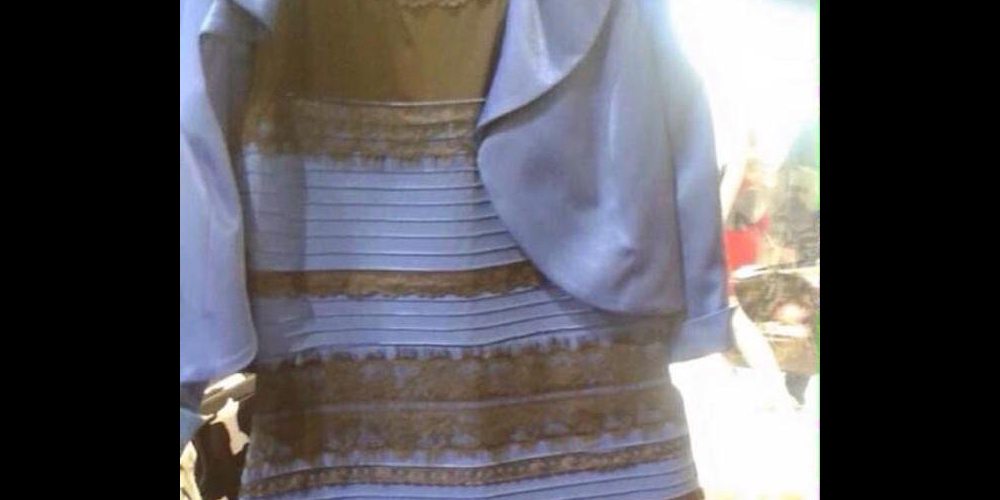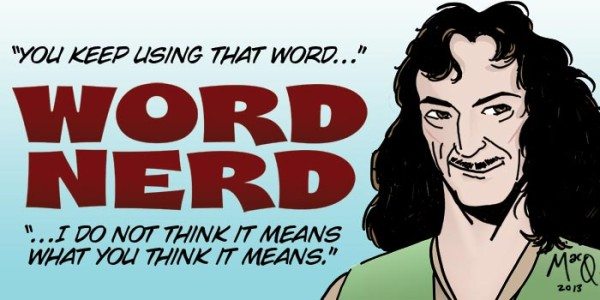Late last week, that Dress took the Internet by storm. But, more importantly, it took the world by storm in the “real world.” Just in case you usually live in an alternative computer simulation to ours, the Dress I am talking about is this one:
 which is blue and black or white and gold depending on… well, we don’t quite know and we certainly didn’t have a good idea when we first saw it. Suffice it to say, it led to discussion, heated arguments, and hints of divorce (revealing just a little about trust and joking around). For the record, I saw it initially as white and gold before, immediately seeing it as blue then back again.
which is blue and black or white and gold depending on… well, we don’t quite know and we certainly didn’t have a good idea when we first saw it. Suffice it to say, it led to discussion, heated arguments, and hints of divorce (revealing just a little about trust and joking around). For the record, I saw it initially as white and gold before, immediately seeing it as blue then back again.
In a world where you might think there is nothing more to say about this topic I wanted to raise the important opportunity it represents and still represents to us parents: it is a unique event to teach the scientific method.
Here is how this went down in our household — as it turned out over breakfast. I showed my 10-year-old daughter the picture and she saw it as white and gold. I was seeing it as blue but she thought I was just having her on. Then her mother came down and was asked what color she saw: as it turned out, also blue. As she has more credibility than me, this immediately raised the issue for my daughter as a real one: we were seeing different things. She then turned her mind to the question of why.
She then came up with a theory — and she called it that: age is what caused people to see different colors. To test the theory, she called down her 14-year-old brother who, was at least closer to her age. But what did he see? He saw a blue dress. So did her 16-year-old sister. This distressed her immensely. “I don’t want to be the only one who’s different!”
That prompted a new theory. Maybe it was eyesight? She often wears glasses for reading but she wasn’t then. So she popped and up, got them and … still white and gold.
The puzzle went with her to school. As it turned out, her teacher was already onto this topic and showed the class the picture. Everyone saw it as white and gold which, if you think about it, is a pretty statistically unlikely event. That prompted her to return to her age theory but with a different cut off point — being younger than a teenager.
This is where we settled because that theory hasn’t yet, in her experience, been falsified. But a broader discussion occurred in our household and also in many workplaces on theories as to differences. Some hypothesized that it related to people’s type only to find about people like me who had seen both. Some thought it might relate to screen size, resolution or brightness, only to still have differences when replicating the experiment under unchanging conditions. Everyone was coming up with theories, devising tests and testing them. I cannot think of a greater victory for science in society.
As it turns out, science is getting close but not quite there on the Great Dress Experiment of 2015. But around dinner tables and schoolrooms across the world, a real life mystery capable of analysis without high-tech science has fallen in our laps. If you haven’t exploited it yet for some learning, don’t miss the opportunity.





“”For the record, I saw it initially as white and gold before, immediately seeing it as blue then back again.””
Please explain to me why this is not bat shit crazy…
I also saw it as white gold in the morning, then blue black in the afternoon and that’s what it remains.
There are a few of us out there. Maybe we are crazy!